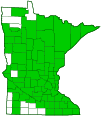eastern prickly gooseberry
(Ribes cynosbati)
Conservation • Wetland • Description • Habitat • Ecology • Use • Distribution • Taxonomy
Description |
||
Eastern prickly gooseberry is a 24″ to 48″ tall, erect, perennial shrub that rises on multiple stems from a branching, woody root system. In Minnesota it is usually about 36″ tall. The stems are ascending, arching, or prostrate on the ground and creeping (trailing), occasionally branching, and 24″ to 80″ long. Long stems may arch to the ground and root at the tip, forming a crown that sends up new stems. Other stems may be trailing and may root at the nodes. First year stems are green and hairy. They become gray or brown and hairless by the third year. The stems and branches have 1 to 3 straight, 3 ⁄16″ to ⅝″ long spines just below the nodes. The stems also have stiff, slender, brown to reddish-brown, up to ¼″ long bristles between the nodes. The branches have fewer bristles or no bristles between the nodes, especially near the top of the plant.. The leaves are alternate and occur singly or in small clusters (fascicles) of 2 or 3. They are round to oval in outline, ¾″ to 2⅛″ long and wide, and are on hairy, ½″ to 1″ long leaf stalks. The leaf blades are palmately divided into 3 or 5 lobes. The lobes may be further divided into 3 or 5 shallow secondary lobes. The base is usually shallowly heart-shaped, sometimes rounded or truncate. The upper surface is dark green and softly hairy when young, usually without glandular hairs, becoming hairless with age. The lower surface is similar but pale green. The margins are toothed with rounded teeth. The inflorescence is a loose, unbranched cluster of 1 to 3, rarely 4, flowers rising from the leaf fascicles. It is on a slender, ¼″ to 1″ long stalk that has both glandular and non-glandular hairs. Each flower is about ⅓″ long and droops downward on a slender, 3 ⁄16″ to ⅝″ long stalk that has both glandular and non-glandular hairs. There is a pair of bracts at the base of the flower stalk. The bracts are 1 ⁄32″ to ⅛″ long, shorter than the flower stalks, and are fringed with glandular hairs. At the base of the flower is a green ovary that is covered with stiff, glandular hairs that harden into prickles on the fruit. Above the ovary is a green, bell-shaped, ⅛″ to 3 ⁄16″ long, cup-like structure (hypanthium). At the end of the hypanthium are 5 sepal lobes. The lobes are green, sometimes tinged with purple, 1 ⁄16″ to ⅛″ long, and initially erect but soon bending sharply backwards. The sepal lobes are shorter than the calyx tube (the outer portion of the hypanthium). Also at the end of the hypanthium are 5 white, inversely egg-shaped, 1 ⁄32″ to 3 ⁄32″ long petals. Emerging from the hypanthium are 5 stamens, about as long as the petals, and a style, about as long as the sepals. The style is divided for the upper third of its length. The fruit is a globular, 5 ⁄16″ to 9 ⁄16″ in diameter berry with conspicuous prickles. Immature berries are shiny green with narrow, pale green, vertical stripes. When ripe they are dull red or dull purple. They are held well away from the stem. |
||
Height |
||
24″ to 48″ |
||
Flower Color |
||
Greenish-yellow |
||
Similar Species |
||
Missouri gooseberry (Ribes missouriense) calyx lobes are longer than the tube. The ovary does not have hairs. The fruit does not have prickles. |
||
Habitat |
||
Open woods. Shade tolerant. |
||
Ecology |
||
Flowering |
||
Late April to early June |
||
Pests and Diseases |
||
|
||
Use |
||
|
||
Distribution |
||||
|
Sources |
|||
| 9/23/2021 | ||||
Nativity |
||||
Native |
||||
Occurrence |
||||
Common |
||||
Taxonomy |
|||
| Kingdom | Plantae (Plants) | ||
| Subkingdom | Pteridobiotina | ||
| Phylum | Tracheophyta (Vascular Plants) | ||
| Class | Magnoliopsida (Dicots) | ||
Order |
Saxifragales (saxifrages, stonecrops, and allies) | ||
Family |
Grossulariaceae (gooseberry) | ||
| Genus | Ribes (currants and gooseberries) | ||
| Subgenus | Grossularia | ||
| Section | Grossularia | ||
Synonyms |
|||
Grossularia cynosbati Ribes cynosbati var. atrox Ribes cynosbati var. glabratum Ribes cynosbati var. inerme Ribes huronense |
|||
Common Names |
|||
dog-bramble dogberry eastern prickly gooseberry pasture currant prickly gooseberry prickly wild gooseberry |
|||
Glossary
Bract
Modified leaf at the base of a flower stalk, flower cluster, or inflorescence.
Calyx
The flower cup. May be the group of outer floral leaves (sepals) collectively, or a tube with lobes.
Fascicle
A small bundle or cluster, often sheathed at the base, as with pine needles.
Glandular hairs
Hairs spread over aerial vegetation that secrete essential oils. The oils act to protect against herbivores and pathogens or, when on a flower part, attract pollinators. The hairs have a sticky or oily feel.
Hypanthium
A cup-like tubular structure of a flower formed from the fused bases of sepals, petals, and stamens, that surrounds the pistil. Its presence is diagnostic of many families, including Rose, Gooseberry, and Pea.
Node
The small swelling of the stem from which one or more leaves, branches, or buds originate.
Palmate
Similar to a hand. Having more than three lobes or leaflets that radiate from a single point at the base of the leaf.
Sepal
An outer floral leaf, usually green but sometimes colored, at the base of a flower.
Trailing
Prostrate on the ground and creeping.
Truncate
Terminating abruptly as if cut off, as with a leaf base.
Visitor Photos |
|||||
Share your photo of this plant. |
|||||
| This button not working for you? Simply email us at info@MinnesotaSeasons.com. Attach one or more photos and, if you like, a caption. |
|||||
Luciearl |
|||||
Most likely planted by wildlife. These popped up this year under the bird feeder. Grooved stems. |
|||||
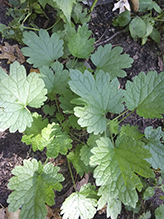 |
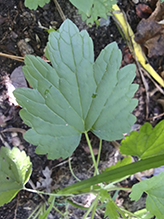 |
||||
Michelle DeVries |
|||||
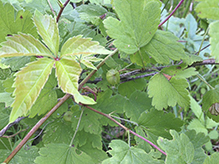 |
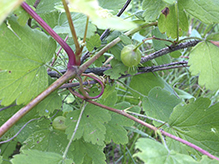 |
||||
MinnesotaSeasons.com Photos |
|||||
Inflorescence |
|||||
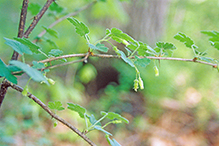 |
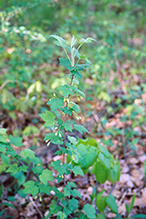 |
||||
Leaves |
|||||
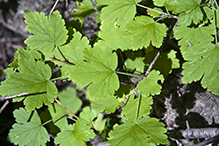 |
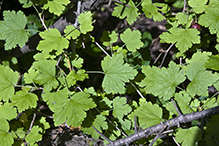 |
||||
Stem |
|||||
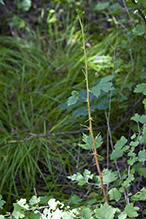 |
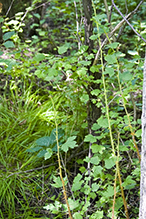 |
||||
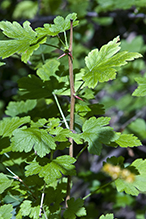 |
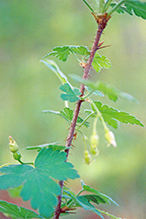 |
||||
Fruit |
|||||
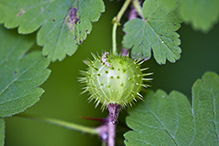 |
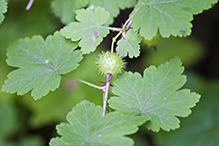 |
||||
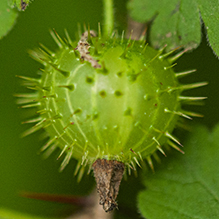 |
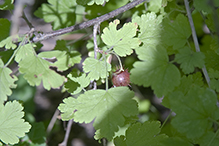 |
||||

Slideshows |
||

Visitor Videos |
|||
Share your video of this plant. |
|||
| This button not working for you? Simply email us at info@MinnesotaSeasons.com. Attach a video, a YouTube link, or a cloud storage link. |
|||
Other Videos |
|||
| Willi_Kryzhovnik_2009.avi Alexey Skakun |
|||
About
Uploaded on Apr 24, 2011 Skye terrier Willi help to collect a prickly gooseberry |
|||

Visitor Sightings |
|||||
Report a sighting of this plant. |
|||||
| This button not working for you? Simply email us at info@MinnesotaSeasons.com. Be sure to include a location. |
|||||
| Luciearl 9/20/2021 |
Location: Lake Shore, Cass County Most likely planted by wildlife. These popped up this year under the bird feeder. Grooved stems. |
 |
|||
| Michelle DeVries 7/12/2014 |
Location: Beltrami Co. |
 |
|||
MinnesotaSeasons.com Sightings |
|||||

|
Created: Last Updated: © MinnesotaSeasons.com. All rights reserved. |
